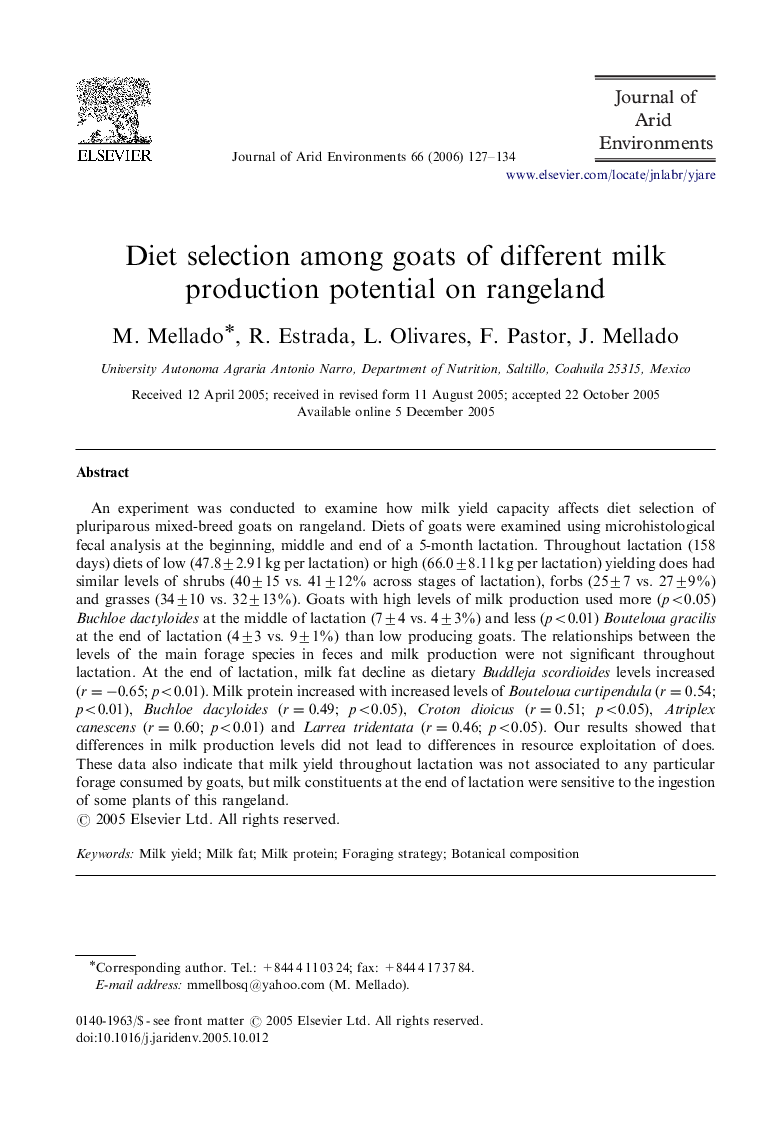| Article ID | Journal | Published Year | Pages | File Type |
|---|---|---|---|---|
| 4394689 | Journal of Arid Environments | 2006 | 8 Pages |
An experiment was conducted to examine how milk yield capacity affects diet selection of pluriparous mixed-breed goats on rangeland. Diets of goats were examined using microhistological fecal analysis at the beginning, middle and end of a 5-month lactation. Throughout lactation (158 days) diets of low (47.8±2.9 l kg per lactation) or high (66.0±8.1 l kg per lactation) yielding does had similar levels of shrubs (40±15 vs. 41±12% across stages of lactation), forbs (25±7 vs. 27±9%) and grasses (34±10 vs. 32±13%). Goats with high levels of milk production used more (p<0.05p<0.05) Buchloe dactyloides at the middle of lactation (7±4 vs. 4±3%) and less (p<0.01p<0.01) Bouteloua gracilis at the end of lactation (4±3 vs. 9±1%) than low producing goats. The relationships between the levels of the main forage species in feces and milk production were not significant throughout lactation. At the end of lactation, milk fat decline as dietary Buddleja scordioides levels increased (r=-0.65r=-0.65; p<0.01p<0.01). Milk protein increased with increased levels of Bouteloua curtipendula (r=0.54r=0.54; p<0.01p<0.01), Buchloe dacyloides (r=0.49r=0.49; p<0.05p<0.05), Croton dioicus (r=0.51r=0.51; p<0.05p<0.05), Atriplex canescens (r=0.60r=0.60; p<0.01p<0.01) and Larrea tridentata (r=0.46r=0.46; p<0.05p<0.05). Our results showed that differences in milk production levels did not lead to differences in resource exploitation of does. These data also indicate that milk yield throughout lactation was not associated to any particular forage consumed by goats, but milk constituents at the end of lactation were sensitive to the ingestion of some plants of this rangeland.
